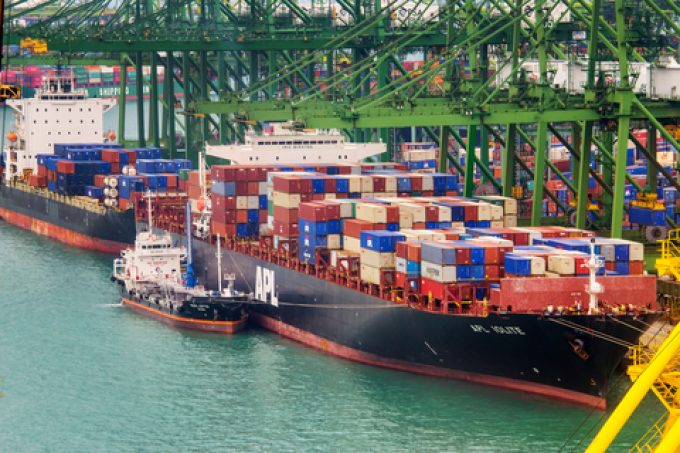Hapag-Lloyd Q1 results: 'significant swings' creating uncertainty in the market
Despite seeing first-quarter carryings increase 6.8% to 3m teu, German carrier Hapag-Lloyd saw revenues and ...

With excess container liner capacity continuing to be soaked up by the widespread vessel diversions around the Cape of Good Hope, combined with surprisingly strong demand, the recent turnaround in the fortunes of shipping lines is now expected to last into the peak season.
According to new analysis from shipping consultancy MSI, anecdotal evidence shows a round of FAK rate hikes announced earlier this month appear to have had some success.
“The initial signs are that these increases are sticking,” it said.
“Apart from the impact of the Cape of Good Hope diversions, a strong rebound in cargo demand across the world is supporting liners’ endeavours to keep freight rates at their current levels,” it added, noting that the main east-west trades, as well as variety of smaller north-south trades had shown “robust” growth.
It said loaded imports at US and Canadian west coast ports grew 23.8% year on year in the first quarter, while the first two months of the year had seen European imports from the Far East increase 11.5% year on year.
These numbers were eclipsed by the Asia-Middle East/India trades, which grew 30.2% and Asia-Oceania’s 29.8%. Meanwhile, Asia-Latin America and Asia-Africa saw a volume growth that was comparable with the transpacific eastbound.
MSI concluded that so long as the Red Sea crisis persisted, freight rates were unlikely to begin declining.
“With few signs of a resolution to the Red Sea crisis in the immediate future, alongside robust demand trends, spot freight rates are likely to stay around their current elevated levels through peak season,” it said.
However, according to Linerlytica founder Hua Joo Tan, the positive sentiment would evaporate overnight, should the Houthis cease their attacks and shipping resume the shorter Suez Canal route.
“We will have complete collapse in freight rates and a complete reversal of the supply-demand situation, because once one or two of the main carriers go back to Suez the rest of the market will have to follow,” he told The Freight Buyers Club podcast.
“When that happens, we will see the 6%-8% of global capacity that has been diverted to the Cape go back to the market, and the new capacity coming within a very short space of time will cause an immediate collapse in rates – I just don’t see how that can be stopped,” he explained.
However, it equally appears that few – including Mr Hua himself – expect any resolution to the crisis soon. Last week, the Maersk Yorktown and the MSC Darwin VI were subject to separate unsuccessful missile attacks while on Djibouti-bound sailings.
Nonetheless, MSI added, the mounting mood of optimism was feeding through to both the charter and second-hand markets – one-year time charter rates for ship sizes are some 60%-120% higher than the same period in 2019, and recent second-hand sales have been “concluded at healthy prices”, it said.
One 15-year-old 4,300 teu panamax vessel was sold this month for $25m, 43% higher than its value in December and 176% up on April 2019.
“The fact that carriers are returning to the second-hand market to buy vessels outright instead of hiring them suggests they are increasingly optimistic about the cargo demand picture, compared with six months ago, and they believe charter rates may stay at their current elevated levels for longer,” said MSI.
And it expected charter rates to continue an upward trajectory over the second and third quarters, but predicted a decline in Q4, “mainly due to the influx of new deliveries”, adding: “Up to today, the system has been able to successfully absorb all the newly delivered vessels, predominantly due to the COGH diversions.
“However, we believe this will not last for ever and, eventually, excess capacity pressures will return, most likely after Q3.
“Nevertheless, for the next two quarters, the picture for the industry looks relatively positive, albeit more for non-operating owners than for carriers,” MSI concluded.
Comment on this article